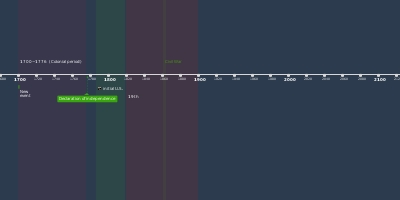Wartime Finance (12 Apr 1861 Jahr – 9 Apr 1865 Jahr)
Beschreibung:
In 1860 the Treasury was a small operation that funded the small-scale operations of the government through land sales and customs based on a low tariff. Peacetime revenues were trivial in comparison with the cost of a full-scale war but the Treasury Department under Secretary Salmon P. Chase showed unusual ingenuity in financing the war without crippling the economy.[188] Many new taxes were imposed and always with a patriotic theme comparing the financial sacrifice to the sacrifices of life and limb. The government paid for supplies in real money, which encouraged people to sell to the government regardless of their politics. By contrast the Confederacy gave paper promissory notes when it seized property, so that even loyal Confederates would hide their horses and mules rather than sell them for dubious paper. Overall the Northern financial system was highly successful in raising money and turning patriotism into profit, while the Confederate system impoverished its patriots.The United States needed $3.1 billion to pay for the immense armies and fleets raised to fight the Civil War—over $400 million just in 1862 alone.[190] Apart from tariffs, the largest revenue by far came from new excise taxes—a sort of value added tax—that was imposed on every sort of manufactured item. Second came much higher tariffs, through several Morrill tariff laws. Third came the nation's first income tax; only the wealthy paid and it was repealed at war's end.
1862 Greenbacks
Apart from taxes, the second major source of income was government bonds. For the first time bonds in small denominations were sold directly to the people, with publicity and patriotism as key factors, as designed by banker Jay Cooke. State banks lost their power to issue banknotes. Only national banks could do that and Chase made it easy to become a national bank; it involved buying and holding federal bonds and financiers rushed to open these banks. Chase numbered them, so that the first one in each city was the "First National Bank". Third, the government printed paper money called "greenbacks". They led to endless controversy because they caused inflation.
The North's most important war measure was perhaps the creation of a system of national banks that provided a sound currency for the industrial expansion. Even more important, the hundreds of new banks that were allowed to open were required to purchase government bonds. Thereby the nation monetized the potential wealth represented by farms, urban buildings, factories, and businesses, and immediately turned that money over to the Treasury for war needs.
- Tariffs -
Secretary Chase, though a long-time free-trader, worked with Morrill to pass a second tariff bill in summer 1861, raising rates another 10 points in order to generate more revenues.These subsequent bills were primarily revenue driven to meet the war's needs, though they enjoyed the support of protectionists such as Carey, who again assisted Morrill in the bill's drafting. The Morrill Tariff of 1861 was designed to raise revenue. The tariff act of 1862 served not only to raise revenue but also to encourage the establishment of factories free from British competition by taxing British imports. Furthermore, it protected American factory workers from low paid European workers, and as a major bonus attracted tens of thousands of those Europeans to immigrate to America for high wage factory and craftsman jobs.
Customs revenue from tariffs totaled $345 million from 1861 through 1865 or 43% of all federal tax revenue.
Zugefügt zum Band der Zeit:
Datum:
12 Apr 1861 Jahr
9 Apr 1865 Jahr
~ 3 years and 11 months
